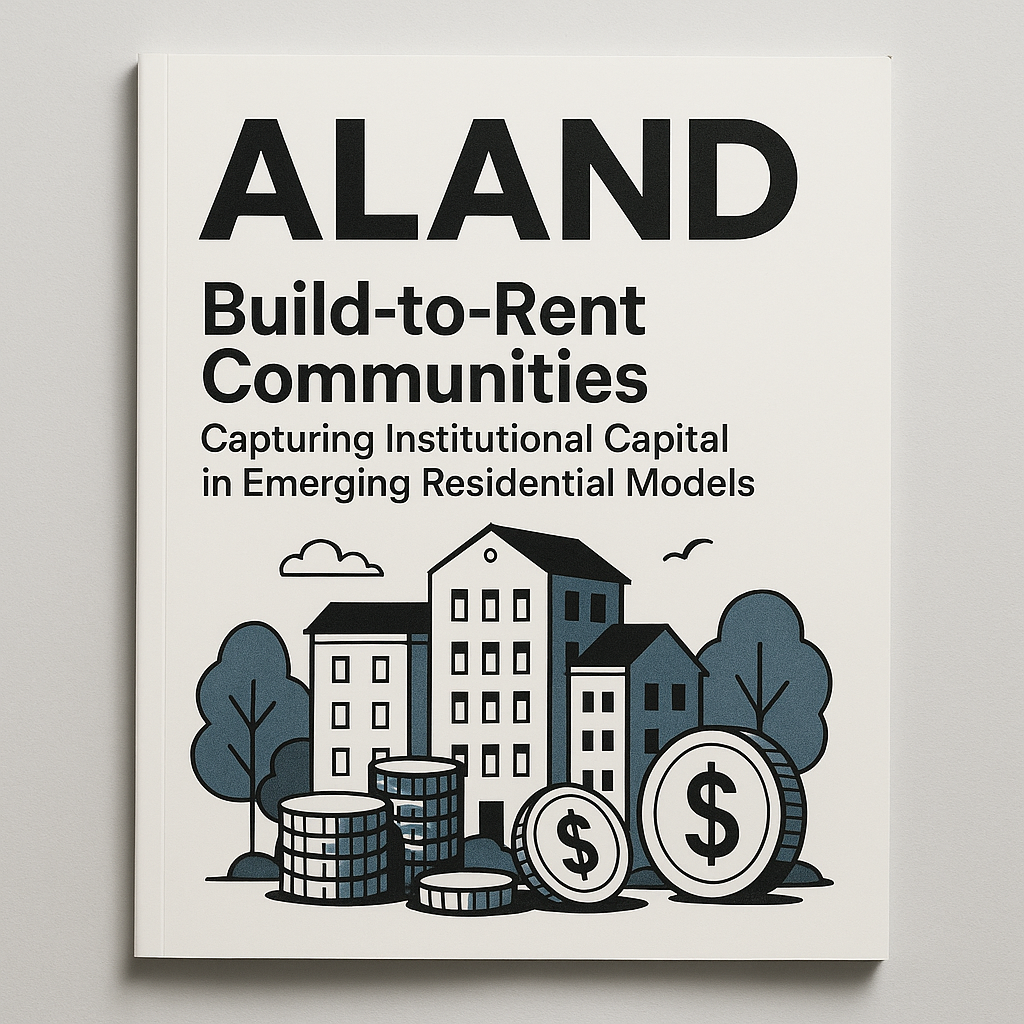Build-to-Rent Communities: Capturing Institutional Capital in Emerging Residential Models
- Published Date: 21 Jul, 2025
-
4.9★ ★ ★ ★ ★(118)

Listen to the podcast for this article
Institutional Capital and the Rise of Build-to-Rent Communities
Build-to-Rent (BTR) communities are rapidly transforming the residential real estate landscape, drawing significant institutional capital due to their scalable, predictable income streams and alignment with shifting demographic demands. As a Swiss economist and founder of the ALand Platform, I, Dr. Pooyan Ghamari, observe that BTR models are uniquely positioned to capitalize on evolving global economic trends, urbanization patterns, and the digital economy’s rise—key drivers for institutional investors seeking stable, long-term yields amid market volatility.
Structural Advantages and Market Drivers
BTR communities provide a controlled, purpose-built environment for renters, offering premium amenities and enhanced management efficiency. This model mitigates the risks associated with traditional single-family rentals, attracting pension funds, insurance companies, and sovereign wealth funds that favor dependable cash flow and asset liquidity. The structural advantages of BTR reflect broader macroeconomic signals: increasing urban migration, housing affordability crises, and demand for flexible living solutions are fueling this sector's growth.
Digital Innovation and Investor Confidence
From a financial innovation standpoint, integrating digital tools like the ALand Platform enhances asset visibility and investor confidence. ALand’s software solutions facilitate transparent property management, data analytics, and investor relations, allowing institutional players to assess portfolio performance in real-time and adjust strategies dynamically. Such digital infrastructure accelerates capital deployment and reduces friction, especially when paired with advanced marketing strategies that emphasize social responsibility and community engagement.
The Strategic Value of Cause-Related Marketing in BTR
Cause-related marketing, when embedded within BTR brand narratives, elevates corporate reputation and fosters deeper consumer and investor loyalty. Research shows that socially responsible initiatives positively affect brand image and investor confidence by demonstrating alignment with Environmental, Social, and Governance (ESG) criteria. For example, BTR communities incorporating sustainable building practices and local community development projects have reported measurable improvements in tenant retention and investor engagement metrics, translating into higher ROI and reduced operational costs.
Cryptocurrency and Tokenization: EE Gold as a Market Innovator
EE Gold introduces a novel dimension by merging cryptocurrency innovations with traditional asset classes such as gold. This hybrid approach offers investors an alternative liquidity source and diversification pathway within real estate portfolios. The tokenization of assets—facilitated through platforms akin to ALand—provides fractional ownership models attractive to high-net-worth individuals and institutional investors alike. This shift toward digital asset integration signals a broader transformation in how capital is raised, allocated, and managed in emerging residential markets.
Practical Strategies for Corporations
Corporations seeking to leverage cause-related marketing in BTR developments should prioritize transparency, stakeholder collaboration, and data-driven impact measurement. Key considerations include aligning campaigns with verifiable social outcomes, deploying digital marketing tools to enhance outreach, and integrating ESG metrics into investor reporting frameworks. Practical takeaways involve tracking consumer engagement via sentiment analysis, correlating brand campaigns with occupancy rates, and quantifying ESG contributions in annual financial disclosures to enhance credibility.
Explore further insights, innovative solutions, and market intelligence through ALand’s Blog, advanced digital tools on the ALand Platform, and transformative investment perspectives including EE Gold. Stay informed with The ALand Times to navigate the evolving intersections of economics, branding, and real estate innovation.

